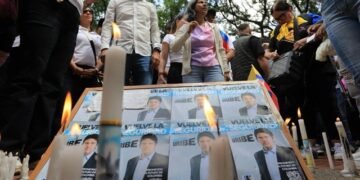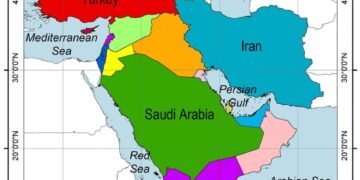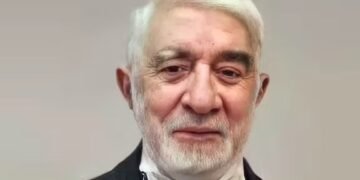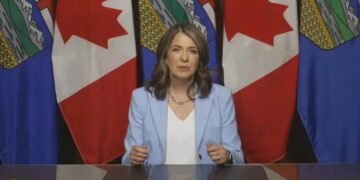Introduction
The year 2025 stands as one of the most politically complex and consequential in recent history. However, to better understand the current dynamics, it’s essential to trace the historical roots and evolving patterns of the global order. Economic transformations, tariff wars, financial market volatility, and the reshaping of global power dynamics are all key elements in this equation.
To understand Iran’s position in this evolving structure, we must first examine three major historical global orders:
-
The Bretton Woods System (1944–1973)
-
The Neoliberal Order (1980–2016)
-
The Emerging Trumpist Global Order (2016 onward)
Today, the world appears to be dividing into three categories of countries:
-
Green countries: Enjoy lower tariffs, military protection from the U.S., and easy access to the dollar.
-
Yellow countries: Exist in a state of economic and diplomatic uncertainty.
-
Red countries: Face sanctions, isolation, or tariff wars.
Iran’s categorization is directly influenced by the historical trajectory of these global orders.
1. The Bretton Woods Order (1944–1973)
Objectives and Structure:
Established in 1944 after World War II, the Bretton Woods system aimed to create global monetary stability. It was based on fixed exchange rates, with national currencies pegged to the U.S. dollar, which in turn was backed by gold. The U.S. guaranteed the security of allied nations, even at the cost of strengthening non-American industries.
Why It Collapsed:
-
Imbalance in Gold Reserves: The U.S. printed more dollars than it could back with gold to finance military spending and budget deficits.
-
Surging Demand for Gold: Nations like France began converting their dollar reserves into gold, depleting U.S. gold reserves.
-
Weakening U.S. Economy: High inflation and slow growth in the 1970s reduced confidence in the dollar.
-
Nixon Shock (1971): President Nixon unilaterally ended dollar-to-gold convertibility, effectively dissolving the Bretton Woods system.
2. The Neoliberal Order (1980–2016)
Following the collapse of Bretton Woods, a new neoliberal order emerged in the 1980s under leaders like Reagan and Thatcher.
Core Features:
-
Reduction of tariffs and promotion of free trade
-
Liberalization of investment and capital flows
-
Adoption of floating exchange rates (currencies no longer pegged to gold or the dollar)
-
U.S. military protection for its allies
Impacts:
-
Manufacturing boomed in developing nations like China, which exported heavily to the U.S.
-
The U.S. shifted from being a producer to a major consumer, strengthening the dollar.
-
Global trade favored exporters, while American industry declined — a trend known as “deindustrialization.”
China’s entry into the WTO in 2001 (referred to as the “China Shock”) further accelerated this shift. As production costs soared in the U.S., many factories relocated overseas.
The strong dollar incentivized other nations to buy U.S. Treasury bonds, enabling Washington to spend freely without immediate consequences.
3. The End of Neoliberalism and the Rise of Trumpism
By 2016, rising inequality and the decline of traditional American industries led to the election of Donald Trump, who promised to “bring America back.” He launched a trade war against China, imposing tariffs to protect domestic manufacturing. China retaliated with its own tariffs, but the trade war failed to revive U.S. industry.
Trump’s successor, Joe Biden, took a different approach: injecting massive subsidies into domestic industries — a move that further ballooned the U.S. budget deficit.
4. The New Trumpist Global Order (2024 and Beyond)
With Trump’s potential return to power, a new phase of global strategy is emerging, characterized by:
-
The U.S. retreating from the role of global security provider
-
A renewed focus on domestic industrial revival and trade protectionism
-
Maintaining dollar dominance, but without reliance on global economic integration
This strategy unfolds in three key stages:
-
Tariff Chaos
-
Retaliatory Tariffs
-
Negotiation Phase and Reconstruction of the Global Order
Preliminary Conclusion
Iran must decide where it wants to position itself within this shifting global framework. As the world order continues to realign, both new opportunities and significant challenges await countries like Iran.

 English
English






































